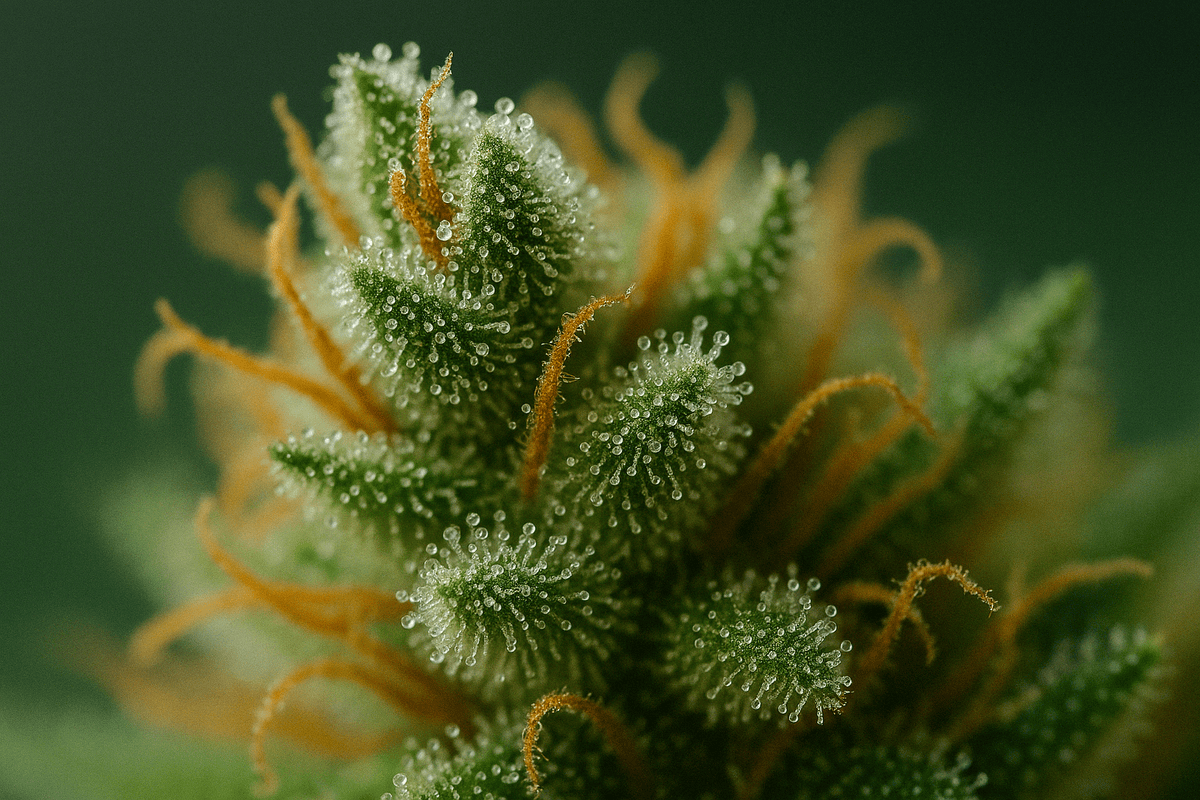
What are hemp trichomes?
|
|
Playback time 5 min
|
|
Playback time 5 min
CONTENTS
Trichomes are like little tentacles, sometimes visible to the naked eye, which contain large quantities of cannabinoids. They play a crucial role in the maturation of the CBD flower and are responsible for its virtues. Mama explains what hemp trichomes are to become an infallible CBD connoisseur.
Trichomes are small membranes found on hemp flowers, branches and leaves. Some trichomes can be seen with the naked eye, but they can be studied more closely using a microscope.
They develop as the plant grows and concentrate the resin, rich in cannabinoids and terpenes. Hemp connoisseurs and enthusiasts take a keen interest in these little features. They play a crucial role in several aspects of CBD: smell, color, flavors and effects.
Resembling tiny hairs, they play an essential role in determining the right time to harvest. And growers keep a close eye on the evolution of trichomes to produce a quality plant.
The growing method favors trichome development. A plant exposed to ultraviolet light is more likely to develop a large number of trichomes. As a result, the flower will be more powerful.
There are different types of trichomes and they are not necessarily present in all CBD varieties.
There are two main categories of trichomes, divided into sub-categories. Glandular trichomes secrete active agents in their glands (terpenes and cannabinoids). There are 3 types of glandular trichomes:
Non-glandular trichomes are distinguished by their absence of glands. They contain no active substances (cannabinoids and terpenes). They are nonetheless important for protecting the plant from external aggression. These are unicellular, cytolytic trichomes.
Trichomes contain all the substances that give the plant its unique characteristics. They are identified in 3 categories.
There are over a hundred different terpenes present in trichomes. Depending on the terpene, the smell, taste and benefits will differ. Terpenes are also found in other plants. For example, the linalool found in lavender helps you relax, while the limonene found in mint gives it its distinctive scent.
Trichomes also contain the cannabinoids responsible for hemp's benefits. There are around 120 of these, which are essential for the entourage effect and interact with the human endocannabinoid system. The list is long, but includes CBD (cannabidiol), THC (tetracanabidiol), CBN (cannabinol) and CBG (cannabigerol).
Flavonoids like terpenes are not unique to hemp. They are present in a wide variety of plants and are responsible for odor, flavor and color. They account for 10% of the compounds in a hemp plant. There are over 6,000 in nature. Flavonoids are antioxidants and a necessary part of a balanced diet.
Trichomes play an essential protective role in the plant kingdom. Their main function is to protect the plant from environmental threats. They can produce odorous substances to protect the plant from predators and other insect pests, as well as attracting pollinators.
Trichomes, especially bulbous ones, act as a protective barrier against excessive water evaporation , reducing moisture loss to prevent rapid dehydration.
Trichomes absorb the sun's ultraviolet (UV) rays, particularly for outdoor crops. They protect plant cells from damage caused by excessive UV exposure.
They can produce antimicrobial compounds that inhibit the growth of molds, fungi and other pathogens. And in some plants, trichomes are responsible for the production and secretion of essential oils and aromas, including hemp, lavender, mint...
Trichomes demonstrate the complexity and effectiveness of plants' natural defense mechanisms.
Trichomes play an important role in flower harvesting. They are also used to extract oils, resins and waxes. They are also responsible for the pollen so coveted by connoisseurs.
Trichomes are used to obtain products of exceptional purity. Extraction is the process of separating the trichomes to obtain a concentrate of cannabinoids and terpenes.
The effects produced by this type of concentrate are much more powerful than the flower alone, making them even more effective. During flowering, it is also possible to gradually increase the potency of a flower.
Subjecting plants to a little stress helps strengthen their defenses and thus increase trichome production. Growers use a variety of methods, such as adding nutrients to the soil, increasing light levels, trellising, and altering temperature and humidity.
Growing hemp requires a great deal of knowledge and careful observation, as each stage is crucial to the plant's development.
